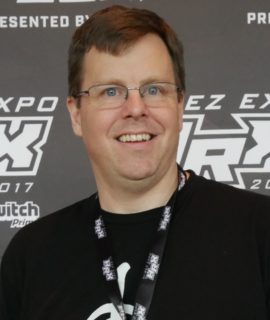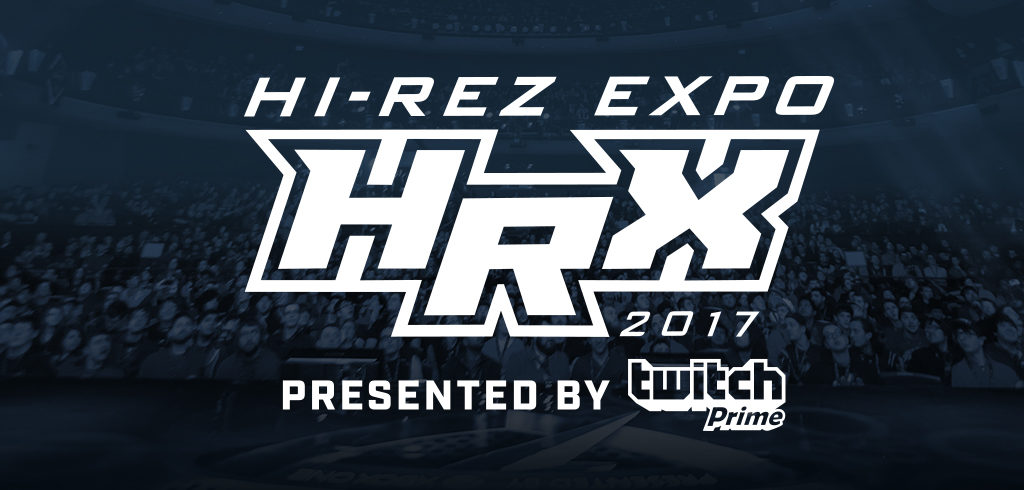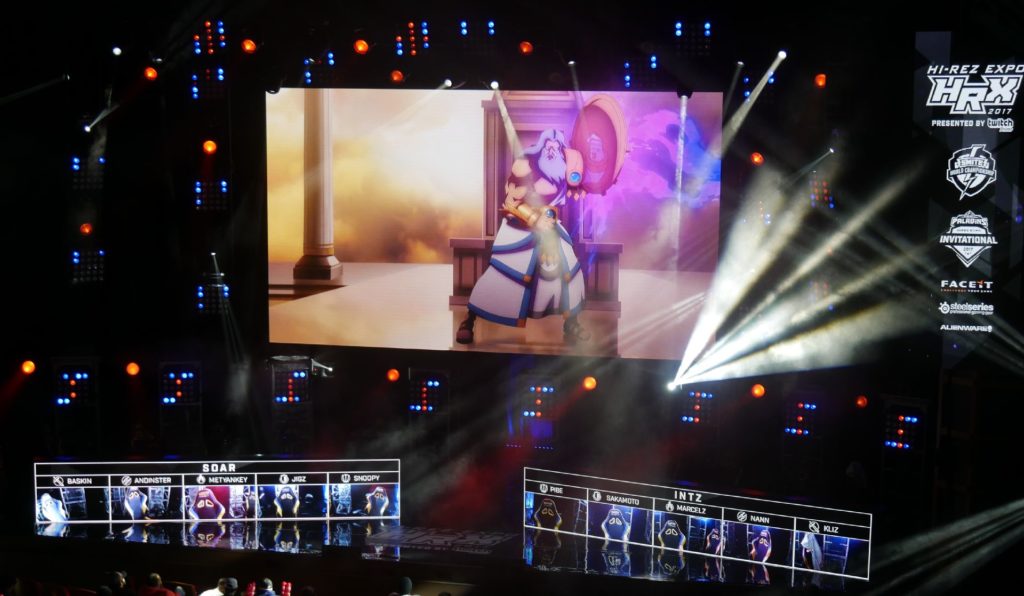The Hi-Rez Expo (formerly the Smite World Championship), held at the Cobb Energy Performing Arts Center in Atlanta, Georgia, concluded four days of intense competition across three world tournaments yesterday. The company’s flagship game, Smite, where players choose from a variety of gods battle against each other, was divided into PC and console tournaments. Meanwhile, Paladins, which released on Early Access last year, made its debut as an eSport at the event. There were plenty of close matches and big surprises, with the excitement enhanced by the announcement of a new mobile game, Smite Rivals, based in the highly successful competitive game.
Stewart Chisam, president of Hi-Rez Studios, sat down with [a]listdaily at the event to talk about how the Expo has grown over the years, and how having close ties to the community—along with a whole lot of godly eSports—help the company to continue to grow.

How has the Hi-Rez Expo (formerly the Smite World Championship) grown and changed?
It’s been amazing to see it continue to grow and expand. We continue to use the Cobb Energy Performing Arts Center because we love it. Each year, we’re pressing the boundaries of how much we can take on in the facility. We add more to it each year—last year, we added the Smite console championship to the event and started the idea of a Hi-Rez Expo, using more of the expo and ballroom spaces here to introduce more new games. This year, we’ve made the full switch to a multi-game expo, but the constant has always been the amazing community. Thousands of our fans from around the world come to watch. It’s still a heavily eSports-focused event, especially this year with three world championships featuring 22 teams from 20 countries.
It’s been humbling to see how our fans have responded and how we’ve been able to grow year-over-year.
How does a location-based event like the Hi-Rez Expo help to engage with fans?
It gives us a point in the year where we can focus a lot of attention and marketing to re-engage fans with all the great things we’re doing. After the event, we tend to see a lot of people coming back to our games and checking us out again. Obviously, having a strong eSports title drives continued high engagement. There are all of those benefits, but some of the softer benefits are just as important for us. One of the reasons we hold the event in Atlanta is so our own people can come. It’s extraordinarily motivating for employees of the studio to come to events like this and talk to fans, see what they’re doing, and hear what’s on their minds. My favorite part is asking where people are from and finding out how far they’ve traveled and the circumstances they’ve come from to be here.
What would you say were some of the biggest lessons you learned from launching previous games?
I could write a novel [laughs]. I like to tell people that we’ve made every mistake possible, which I don’t think is an indictment of being bad. Some of the lessons that came from them are: keep your ear to the ground of your community; be in a position to react fast; and you have to believe in your ideas and vision, but don’t be so focused that you refuse to see your own flaws. There are a ton of lessons that come from each game and the learning curve hasn’t slowed down. I feel that every day we learn more about how to do this. I think it’s typical that, as you learn more about something, you grow more humble about what you don’t know, which is a good thing because that means there’s so much more potential for how we can take this further.
There appear to be two opposing strategies to creating competitive games: developing a variety of titles for a diverse portfolio, or putting all the company’s resources behind one game. What are the benefits of the former, and what are your thoughts on the latter?
Some of it is about how we started as a multi-game studio. Smite isn’t our first game, so we were always supporting multiple games. When Smite launched, we were a 45-person company and had around 15 people on each of our three games: Tribes: Ascend, Global Agenda and Smite. I don’t think either strategy is wrong, but in some ways, it’s part of our DNA to be a multi-game studio. We had developed processes and the infrastructure to support a multi-game foundation. The Smite team is bigger than it ever has been, but we’re passionate about making games, and we had a few other ideas for games, and people who really wanted to make them. We felt they had the potential to be great successes on the market, and that we could take it on, so I think it’s just how we evolved.
What have been some of the biggest benefits to having a game like Smite adopted as an eSport, and how do you continue to grow it?
It gives your fans and community something to focus on and gives them peers to live up to, admire and learn from. The eSports ecosystem combines with the streamer ecosystem. They (fans) watch Zapman (Steven Zapas) playing out here for Team Eager here on the stage, then he goes home to be a streamer. He interacts with the community to teach people how to play the game and encourages the next generation of competitive players. That’s a virtuous cycle for us.

Smite released for consoles last year, and Paladins is coming to consoles later this year. How do you grow games between the console and PC platforms? What about reaching eSports audiences compared to casual ones?
A lot of it carries over. For example, an event like the Hi-Rez Expo is great for us across all platforms around the world. But we’re learning more every year, and I think the eSports ecosystems and the player ecosystems between consoles and PC are a little different. We initially brought PC concepts to console, and we’re learning how to better serve the console player base each year.
Broadly speaking, all I can say is that free-to-play on console systems has been amazing for us. We think that’s an area that has been broadly underserved. The fan bases we’ve seen on consoles have been amazing and extremely responsive. The rate at which the eSports scene has been improving, across all the metrics (streaming, the level of competition, etc.) is above what Smite was in its first season on the PC. As a company that grew up as PC-only, we’re learning to love and embrace the console community.
What is your advice for getting more non-endemic sponsors involved with eSports?
I think a lot of it is happening naturally now. The biggest thing we’ve seen is that it’s an educational process. Those of us who are in the industry and see how passionate the fans are and their engagement levels don’t realize what a mystery that is to a lot people who aren’t involved in gaming. As an industry, we’re finding that as more non-endemic sponsors come to events like these and experience the fan base, they’re beginning to understand that the enthusiasm they might have had as children around football, basketball or baseball are just as strong with these fans around our games—and that this is the future. It’s happening naturally, but it’s a process. These things never happen overnight.
My general advice is to get people to events like this, sit with them, talk with them about how these fans are engaged with eSports.
What do you want people to think when imagining the Hi-Rez brand?
I think we want our brand to be a company that is extremely engaged with its community, isn’t afraid to experiment and do whacky things, and will occasionally make mistakes—but over the long haul, will always take care of its fans and do the right thing. We want to be close to the community and iterate fast, and when you’re moving fast, every once in a while we’ll try something that didn’t work as well as we had hoped. When that happens, we’ll correct it as fast as we can and we’ll keep growing and improving. That’s what we want our brand to be, and hopefully we’re on the way to get there.
Learn everything you need to know to invest in today’s fastest-growing media channel—Competitive Gaming and eSports on 2.16.17 in Los Angeles. Go to alistsummit.com for more info.

